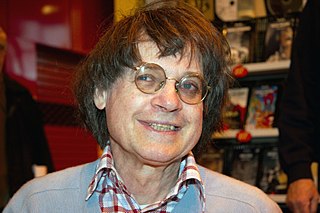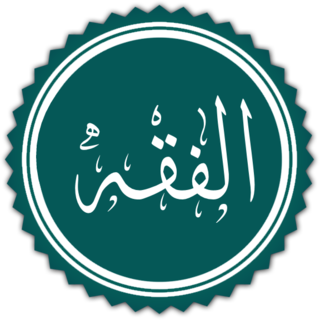Related Research Articles
Charlie Hebdo is a French satirical weekly magazine, featuring cartoons, reports, polemics, and jokes. Stridently non-conformist in tone, the publication has been described as anti-racist, sceptical, secular, and within the tradition of left-wing radicalism, publishing articles about the far-right, religion, politics and culture.
Notable events of 2006 in comics. See also List of years in comics.

Morgenavisen Jyllands-Posten, commonly shortened to Jyllands-Posten or JP, is a Danish daily broadsheet newspaper. It is based in Aarhus C, Jutland, and with a weekday circulation of approximately 120,000 copies,

Jean Maurice Jules Cabut, known by the pen-name Cabu, was a French comic strip artist and caricaturist. He was murdered in the January 2015 shooting attack on the Charlie Hebdo newspaper offices. Cabu was a staff cartoonist and shareholder at Charlie Hebdo.

Flemming Rose is a Danish journalist, author and Senior Fellow at the Cato Institute. He previously served as foreign affairs editor at the Danish newspaper Jyllands-Posten. As culture editor of the same newspaper, he was principally responsible for the September 2005 publication of the cartoons that initiated the Jyllands-Posten Muhammad cartoons controversy early the next year, and since then he has been an international advocate of the freedom of speech.
The Jyllands-Posten Muhammad cartoons were first published by Jyllands-Posten in late September 2005; approximately two weeks later, nearly 3,500 people demonstrated peacefully in Copenhagen. In November, several European newspapers re-published the images, triggering more protests.

Kurt Westergaard was a Danish cartoonist. In 2005 he drew a cartoon of the Islamic prophet Muhammad, wearing a bomb in his turban as a part of the Jyllands-Posten Muhammad cartoons, which triggered several assassinations and murders committed by Islamists around the world, diplomatic conflicts, and state-organized riots and attacks on Western embassies with several dead in Muslim countries. After the drawing of the cartoon, Westergaard received numerous death threats and was a target of assassination attempts. As a result, he was under constant police protection.
This page collects opinions, other than those of governments or inter-governmental organizations, on the Jyllands-Posten Muhammad cartoons controversy. For an overview, and details on the controversy please see the main page.
Ahmed Akkari is a Danish political activist who became known for his involvement in the Jyllands-Posten Muhammad cartoons controversy. Widely called an "Imam" in the media, he himself denied being one. He was a co-author of the Akkari-Laban dossier, which played a major role in the Jyllands-Posten Muhammad cartoons controversy by bringing the issue to the attention of influential decision-makers in the Middle East. In 2013 he distanced himself from his former position and in June 2020 became one of the founders of the political party New Centre-Left.
International Holocaust Cartoon Contest was a 2006 cartoon competition sponsored by the Iranian newspaper Hamshahri, to denounce what it called "Western hypocrisy on freedom of speech". The event was staged in response to the Jyllands-Posten Muhammad cartoons controversy. Several public figures, including the United States State Department, the Israeli Foreign Ministry, and United Nations Secretary General Kofi Annan strongly criticized the contest.

The Jyllands-Posten Muhammad cartoons controversy began after the Danish newspaper Jyllands-Posten published 12 editorial cartoons on 30 September 2005, most of which depicted Muhammad, a principal figure of the religion of Islam. The newspaper announced that this was an attempt to contribute to the debate about criticism of Islam and self-censorship. Muslim groups in Denmark complained, and the issue eventually led to protests around the world, including violent demonstrations and riots in some Muslim countries.

Blasphemy in Islam is impious utterance or action concerning God, but is broader than in normal English usage, including not only the mocking or vilifying of attributes of Islam but denying any of the fundamental beliefs of the religion. Examples include denying that the Quran was divinely revealed, the prophethood of one of the Islamic prophets, insulting an angel, or maintaining God had a son.

Lars Endel Roger Vilks was a Swedish visual artist and activist who was known for the controversy surrounding his drawings of Muhammad. He also created the sculptures Nimis and Arx, made of driftwood and rock, respectively. The area where the sculptures are located was proclaimed by Vilks as an independent country, "Ladonia".
The Lars Vilks Muhammad drawings controversy began in July 2007 with a series of drawings by Swedish artist Lars Vilks that depicted the Islamic prophet Muhammad as a roundabout dog. Several art galleries in Sweden declined to show the drawings, citing security concerns and fear of violence. The controversy gained international attention after the Örebro-based regional newspaper Nerikes Allehanda published one of the drawings on 18 August as part of an editorial on self-censorship and freedom of religion.

Georges David Wolinski was a French cartoonist and comics writer. He was killed on 7 January 2015 in a terrorist attack on Charlie Hebdo along with other staff.

The permissibility of depictions of Muhammad in Islam has been a contentious issue. Oral and written descriptions of Muhammad are readily accepted by all traditions of Islam, but there is disagreement about visual depictions. The Quran does not explicitly or implicitly forbid images of Muhammad. The ahadith present an ambiguous picture, but there are a few that have explicitly prohibited Muslims from creating visual depictions of human figures. It is agreed on all sides that there is no authentic visual tradition as to the appearance of Muhammad, although there are early legends of portraits of him, and written physical descriptions whose authenticity is often accepted.

On 7 January 2015, at about 11:30 a.m. CET local time, two French Muslim brothers, Saïd and Chérif Kouachi, forced their way into the offices of the French satirical weekly newspaper Charlie Hebdo in Paris. Armed with rifles and other weapons, they killed 12 people and injured 11 others. The gunmen identified themselves as belonging to the Islamic terrorist group al-Qaeda in the Arabian Peninsula, which took responsibility for the attack. Several related attacks followed in the Île-de-France region on 7–9 January 2015, including the Hypercacher kosher supermarket siege, where a terrorist killed four Jewish people.

Stéphane Jean-Abel Michel Charbonnier, better known as Charb, was a French satirical caricaturist and journalist. He was assassinated during the Charlie Hebdo shooting on 7 January 2015.

Charlie Hebdo issue No. 1178 was published on 14 January 2015. It was the first issue after the Charlie Hebdo shooting on 7 January 2015, in which terrorists Saïd and Chérif Kouachi killed twelve people. The edition was put together by surviving Charlie Hebdo cartoonists, journalists, and former contributors and was prepared in a room in the offices of Libération. The issue's print run of 7.95 million copies became a record for the French press. The publication sparked protests by Muslim demonstrators in Yemen, Pakistan, Mauritania, Algeria, Mali, Senegal, Niger, Chechnya, and other countries. In Niger, violent protests led to 10 deaths.
The 2010 Norway terror plot was a Norway-based plan to bomb the Danish newspaper Jyllands-Posten and to kill the cartoonist Kurt Westergaard. Two men with links to Al-Qaeda were convicted for the plot, while a third person was acquitted for terror charges.
References
- ↑ "Death threats made against two cartoonists". Reporters Without Borders. 17 Oct 2005. Archived from the original on 2016-01-14.
- ↑ LLOYD VRIES (2 Feb 2006). "Cartoon Inflames Muslim World". CBS News. Archived from the original on 2016-01-14. Retrieved 2015-01-08.
- ↑ "Police foil plot to kill Muhammad cartoonist". NBC News. 2 Dec 2008. Archived from the original on 2016-01-14. Retrieved 2015-01-08.
- ↑ ""terror plot" to kill Mohammed cartoonist". CNN. 2 Dec 2008. Archived from the original on 2016-01-14. Retrieved 2015-01-08.
- ↑ Nicholas Watt (1 Feb 2006). "Danish paper sorry for Muhammad cartoons". The Guardian. Archived from the original on 2016-07-21. Retrieved 2016-12-11.
- ↑ Dashiell Bennet (1 Mar 2013). "Look Who's on Al Qaeda's Most-Wanted List". The Wire. Archived from the original on 2015-01-08. Retrieved 2015-01-08.
- ↑ Conal Urquhart. "Paris Police Say 12 Dead After Shooting at Charlie Hebdo". Time. Archived from the original on 2015-01-07. Retrieved 2015-01-08.
- ↑ Victoria Ward. "Murdered Charlie Hebdo cartoonist was on al Qaeda wanted list". The Telegraph. Archived from the original on 2015-01-07. Retrieved 2019-01-31.
- ↑ Lucy Cormack (8 January 2015). "Charlie Hebdo editor Stephane Charbonnier crossed off chilling al-Qaeda hitlist". The Age. Archived from the original on 2015-01-11. Retrieved 2015-01-08.